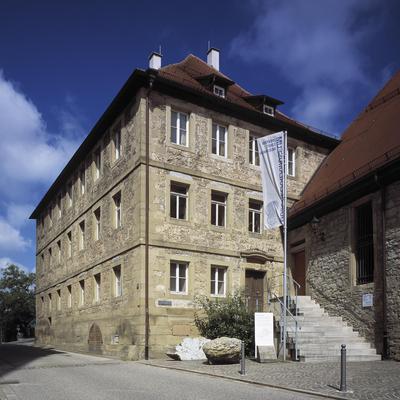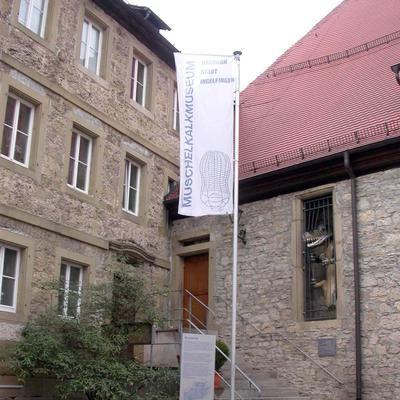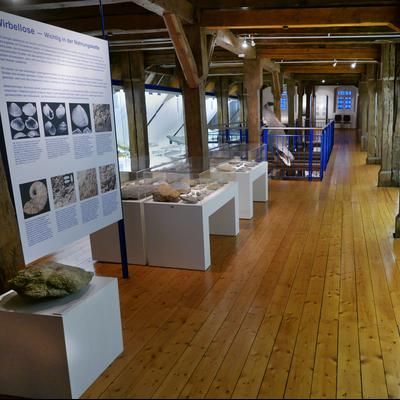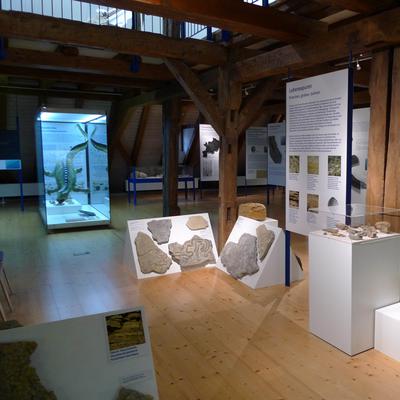The Muschelkalk Museum is located in the historical ‘Innere Kelter‘ (wine press building). It originated from the cooperation between the town of Ingelfingen, the Alberti Foundation of the Hohenlohe Muschelkalk Works, and the private palaeontologist Dr Hans Hagdorn. The exhibition explains the history of the earth and life during the Triassic Period. Spread over three levels Middle Triassic fossils, rocks, and minerals are displayed focusing on the Central European Muschelkalk and Lower Keuper.
Even thought the Muschelkalk Museum Ingelfingen is run as a voluntary organisation it covers the three classical principals of a museum which are
- collecting, documenting, conserving
- displaying, explaining, teaching
- researching, publishing
In order to be able to do so the museum holds a large and scientifically organised and documented collection of Triassic fossils and rocks. The public exhibition shows the most informative and impressive specimens on 600 m2 following a pedagogical concept. Guided tours are available on demand. The museum director publishes research results in specialist publications. An extensively illustrated museum guidebook is available in German. The museum also encompasses a specialist library of geological literature focusing on Southwest Germany and Triassic floras and faunas. It also includes a photo archive of Triassic sections and localities.
The collection and archive is open to researchers under standard museum conditions. Specimens can be loaned out for scientific research with the exception of type material. Books and documents from library and archive are for reference only.
The Muschelkalk Museum is organised by the town of Ingelfingen. The collections are owned by the Alberti Foundation of the Hohenlohe Muschelkalk Works. The museum director Dr Hagdorn is responsible for exhibitions, public relations, collection management, and research.




